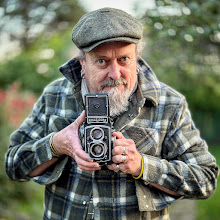Rather than clad the Cornish Engine currently on the workbench as part of my Mendip Colliery project (posed with a bit of CGI in the form of Priddy in Somerset very near to the caver's Mecca of Swildon's Hole in fact) in embossed stone effect sheets, I wanted a more rustic random effect. There's only one way to do this, and that is to carve each stone individually using a sharp object into a surface that will take such abuse - which in this case is Humbrol Air Clay.
Obviously the colour is way off, it being the native red colour of the clay - this will be addressed in due course with paints and weathering. Some of the clay crumbled a little - something that I'm quite pleased because it's part of the effect I'm after, and something that could not be done with embossed plastic. The random cracking is also a useful 'feature' of Air Clay, to further the rustic effect.
To date I've only done this one wall leaving the rest of the structure to be done another day - infact something which is ideal for passing time by when supposedly doing something else like watching dull TV...

